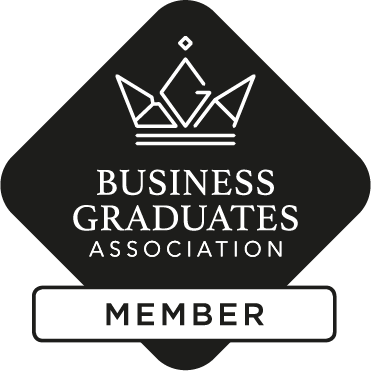University certificate
Scientific endorser

The world's largest faculty of journalism and communication”
Introduction to the Program
Manages the process of creating and implementing novel ideas on a given topic"

Creativity and business management have been conceived as two different disciplines, almost antagonistic. Today, that has been changing little by little, becoming the main drivers of economic and technological progress. This new reality demands certain professional profiles with the ability to develop in a harmonious and effective way the tools of the so-called creative industries.
Therefore, and taking into account the current demands, a program has been developed for the student to obtain mastery in all the necessary subjects for the management of companies and organizations in the new context of the creative industries. At the same time, it aims to become a tool to analyze the economic, social and cultural realities in which the creative industries develop and transform today.
Likewise, the MBA program in Creative Business Management is designed to be studied following a methodology that promotes the acquisition of knowledge and skills in the field of market research, strategic vision, digital tools and co-creation.
The entire content, which includes 10 Masterclasses by a prestigious International Guest Director, is available in a 100% online mode that allows the student to take the course comfortably, wherever and whenever they want. All you need is a device with internet access to take your career one step further. A modality according to the current times with all the guarantees to position the engineer in a highly demanded sector.
Do not hesitate to take this specialization that includes 10 Masterclasses by a renowned international expert"
This Professional master’s degree in MBA in Creative Business Management contains the most complete and up-to-date program on the market. The most important features include:
- The development of case studies presented by experts in Business Management
- The graphic, schematic, and practical contents with which they are created, provide scientific and practical information on the disciplines that are essential for professional practice
- Practical exercises where the self-assessment process can be carried out to improve learning
- Special emphasis on innovative methodologies in the management of creative companies
- Theoretical lessons, questions to the expert, debate forums on controversial topics, and individual reflection assignments
- Content that is accessible from any fixed or portable device with an Internet connection
Develop your communication skills, both written and oral, as well as the ability to make effective professional presentations in everyday practice"
Its teaching staff includes professionals from the field of design, who bring to this program the experience of their work, as well as recognized specialists from leading companies and prestigious universities.
The multimedia content, developed with the latest educational technology, will provide the professional with situated and contextual learning, i.e., a simulated environment that will provide an immersive learning experience designed to prepare for real-life situations.
This program is designed around Problem-Based Learning, whereby the professional must try to solve the different professional practice situations that arise during the course. For this purpose, the professional will be assisted by an innovative interactive video system created by renowned and experienced experts.
Acquire market research skills, strategic vision, digital and co-creation methodologies"

Learn about the latest trends in audiovisual journalism and be the best in this sector"
Why study at TECH?
TECH is the world’s largest online university. With an impressive catalog of more than 14,000 university programs available in 11 languages, it is positioned as a leader in employability, with a 99% job placement rate. In addition, it relies on an enormous faculty of more than 6,000 professors of the highest international renown.

Study at the world's largest online university and guarantee your professional success. The future starts at TECH”
The world’s best online university according to FORBES
The prestigious Forbes magazine, specialized in business and finance, has highlighted TECH as “the world's best online university” This is what they have recently stated in an article in their digital edition in which they echo the success story of this institution, “thanks to the academic offer it provides, the selection of its teaching staff, and an innovative learning method aimed at educating the professionals of the future”
A revolutionary study method, a cutting-edge faculty and a practical focus: the key to TECH's success.
The most complete study plans on the university scene
TECH offers the most complete study plans on the university scene, with syllabuses that cover fundamental concepts and, at the same time, the main scientific advances in their specific scientific areas. In addition, these programs are continuously being updated to guarantee students the academic vanguard and the most in-demand professional skills. In this way, the university's qualifications provide its graduates with a significant advantage to propel their careers to success.
TECH offers the most comprehensive and intensive study plans on the current university scene.
A world-class teaching staff
TECH's teaching staff is made up of more than 6,000 professors with the highest international recognition. Professors, researchers and top executives of multinational companies, including Isaiah Covington, performance coach of the Boston Celtics; Magda Romanska, principal investigator at Harvard MetaLAB; Ignacio Wistumba, chairman of the department of translational molecular pathology at MD Anderson Cancer Center; and D.W. Pine, creative director of TIME magazine, among others.
Internationally renowned experts, specialized in different branches of Health, Technology, Communication and Business, form part of the TECH faculty.
A unique learning method
TECH is the first university to use Relearning in all its programs. It is the best online learning methodology, accredited with international teaching quality certifications, provided by prestigious educational agencies. In addition, this disruptive educational model is complemented with the “Case Method”, thereby setting up a unique online teaching strategy. Innovative teaching resources are also implemented, including detailed videos, infographics and interactive summaries.
TECH combines Relearning and the Case Method in all its university programs to guarantee excellent theoretical and practical learning, studying whenever and wherever you want.
The world's largest online university
TECH is the world’s largest online university. We are the largest educational institution, with the best and widest online educational catalog, one hundred percent online and covering the vast majority of areas of knowledge. We offer a large selection of our own degrees and accredited online undergraduate and postgraduate degrees. In total, more than 14,000 university degrees, in eleven different languages, make us the largest educational largest in the world.
TECH has the world's most extensive catalog of academic and official programs, available in more than 11 languages.
Google Premier Partner
The American technology giant has awarded TECH the Google Google Premier Partner badge. This award, which is only available to 3% of the world's companies, highlights the efficient, flexible and tailored experience that this university provides to students. The recognition as a Google Premier Partner not only accredits the maximum rigor, performance and investment in TECH's digital infrastructures, but also places this university as one of the world's leading technology companies.
Google has positioned TECH in the top 3% of the world's most important technology companies by awarding it its Google Premier Partner badge.
The official online university of the NBA
TECH is the official online university of the NBA. Thanks to our agreement with the biggest league in basketball, we offer our students exclusive university programs, as well as a wide variety of educational resources focused on the business of the league and other areas of the sports industry. Each program is made up of a uniquely designed syllabus and features exceptional guest hosts: professionals with a distinguished sports background who will offer their expertise on the most relevant topics.
TECH has been selected by the NBA, the world's top basketball league, as its official online university.
The top-rated university by its students
Students have positioned TECH as the world's top-rated university on the main review websites, with a highest rating of 4.9 out of 5, obtained from more than 1,000 reviews. These results consolidate TECH as the benchmark university institution at an international level, reflecting the excellence and positive impact of its educational model.” reflecting the excellence and positive impact of its educational model.”
TECH is the world’s top-rated university by its students.
Leaders in employability
TECH has managed to become the leading university in employability. 99% of its students obtain jobs in the academic field they have studied, within one year of completing any of the university's programs. A similar number achieve immediate career enhancement. All this thanks to a study methodology that bases its effectiveness on the acquisition of practical skills, which are absolutely necessary for professional development.
99% of TECH graduates find a job within a year of completing their studies.
Professional Master's Degree in Creative Business Management.
Are you looking to expand your business and leadership skills in the creative field? Then our Professional Master's Degree in Creative Business Management is the perfect choice for you! At TECH Global University, we are proud to offer a Professional Master's Degree program designed specifically for business leaders looking to innovate and thrive in the creative industry. Our unique curriculum combines business knowledge with creativity, giving students the ability to see the business world differently and develop new solutions to business challenges. Through our online classes, you'll have access to Postgraduate Diploma professors in the industry, as well as peers from around the world. You'll learn practical skills in key areas such as finance, marketing, human resources and business strategy, all while exploring how creativity can drive business success.
Discover how creativity can drive business success with our MBA program.
The Professional Master's Degree in Creative Business Management is ideal for business leaders, managers and professionals working in creative industries such as design, advertising, film and television, technology, fashion and more. Our program is designed to help you advance your career and prepare you for an exciting future in the creative industry. Upon graduation from the program, you'll have the skills and knowledge necessary to lead teams, manage projects and make informed business decisions. You will also have a global network of creative business contacts that can help you advance your career. Enroll today and begin your path to entrepreneurial success!







